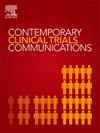“Common sense is hard work” but benefits from persistent collaboration: Lessons learnt from the development of The Collaborative Network for European Clinical Trials for Children (c4c) to support the conduct of paediatric clinical trials of medicines
IF 1.4
Q4 MEDICINE, RESEARCH & EXPERIMENTAL
引用次数: 0
Abstract
Introduction
The Collaborative Network for European Clinical Trials for Children (c4c) is a public private partnership with a developed infrastructure across European sites to support the design and conduct of multi-national academic and industry paediatric clinical trials. This paper aims to review the learning points identified during co-development of c4c processes by academic and industry partners.
Methods
Study metrics were recorded. Learning points were captured during network development, categorized and included in a thematic analysis from which lessons learnt were identified.
Results
12 trials were supported by sites coordinated at national level and integrated at European level. A total of 9 CDA cycles were completed, resulting in 436 site CDAs signed in a median of 8.11 days. Lessons learnt included the importance of: relationship building by early engagement with partners; reducing misunderstanding by clear communication; flexibility, adaptability and experiential learning which are required for service improvement. Practical actions that infrastructure developers and users can take include operational planning with a view to fostering collaborations across stakeholders, sharing information about different approaches to clinical operations, and raising awareness of the need for explicit work on collaboration, communication, and planning. Traditionally, these activities are repeated for each trial. The use of a persistent network allows the benefits of collaboration to be recycled.
Discussion
Building a successful framework for collaboration allows dedication and determination to carry over from one study to another. The initial investment of time to share assumptions and “state the obvious” by each user will support future trials.
“常识是艰苦的工作”,但受益于持续的合作:从欧洲儿童临床试验合作网络(c4c)的发展中获得的经验教训,以支持开展儿科药物临床试验
欧洲儿童临床试验合作网络(c4c)是一个公私合作伙伴关系,在欧洲各地拥有发达的基础设施,以支持多国学术和工业儿科临床试验的设计和实施。本文旨在回顾学术和行业合作伙伴在c4c流程共同开发过程中确定的学习点。方法记录研究指标。在网络发展过程中收集了学习要点,加以分类并列入专题分析,从中确定吸取的教训。结果12项试验得到了国家层面协调和欧洲层面整合的站点的支持。总共完成了9个CDA周期,在中位8.11天内签署了436个站点CDA。吸取的经验教训包括:通过与合作伙伴的早期接触建立关系;通过清晰的沟通减少误解;服务改进所需要的灵活性、适应性和经验学习。基础设施开发人员和用户可以采取的实际行动包括运营计划,以促进利益相关者之间的合作,共享关于不同临床操作方法的信息,并提高对协作、沟通和规划方面明确工作的需求的认识。传统上,每次试验都要重复这些活动。持久网络的使用使协作的好处得以循环利用。讨论建立一个成功的合作框架可以使奉献精神和决心从一个研究延续到另一个研究。每个用户最初投入时间分享假设和“陈述显而易见的事情”将支持未来的试验。
本文章由计算机程序翻译,如有差异,请以英文原文为准。
求助全文
约1分钟内获得全文
求助全文
来源期刊

Contemporary Clinical Trials Communications
Pharmacology, Toxicology and Pharmaceutics-Pharmacology
CiteScore
2.70
自引率
6.70%
发文量
146
审稿时长
20 weeks
期刊介绍:
Contemporary Clinical Trials Communications is an international peer reviewed open access journal that publishes articles pertaining to all aspects of clinical trials, including, but not limited to, design, conduct, analysis, regulation and ethics. Manuscripts submitted should appeal to a readership drawn from a wide range of disciplines including medicine, life science, pharmaceutical science, biostatistics, epidemiology, computer science, management science, behavioral science, and bioethics. Contemporary Clinical Trials Communications is unique in that it is outside the confines of disease specifications, and it strives to increase the transparency of medical research and reduce publication bias by publishing scientifically valid original research findings irrespective of their perceived importance, significance or impact. Both randomized and non-randomized trials are within the scope of the Journal. Some common topics include trial design rationale and methods, operational methodologies and challenges, and positive and negative trial results. In addition to original research, the Journal also welcomes other types of communications including, but are not limited to, methodology reviews, perspectives and discussions. Through timely dissemination of advances in clinical trials, the goal of Contemporary Clinical Trials Communications is to serve as a platform to enhance the communication and collaboration within the global clinical trials community that ultimately advances this field of research for the benefit of patients.
 求助内容:
求助内容: 应助结果提醒方式:
应助结果提醒方式:


